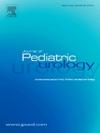尿流计预测和检测造血干细胞移植后出血性膀胱炎的潜力。
IF 2
3区 医学
Q2 PEDIATRICS
引用次数: 0
摘要
背景:出血性膀胱炎(HC)是造血干细胞移植(HSCT)后的一种严重并发症,发病率和死亡率都很高。早期识别高危患者并及时诊断是有效治疗的关键。这项前瞻性队列研究评估了尿流率测量法作为儿科造血干细胞移植患者HC检测预测工具的潜力:方法:31 名接受异基因造血干细胞移植的儿童入组。在入院(第 0 天)、造血干细胞移植后第 1 天和第 15 天以及 HC 发病时进行尿流率测定。对HC和非HC患者的尿流参数进行了比较,包括最大流速(Qmax)、平均流速(Qavg)、排尿量(VV)和尿流曲线形状:结果:HSCT 术后 100 天内 HC 的发生率为 58%,平均发病时间为 35 天。在基线(第 0 天),与非 HC 患者相比,HC 患者的 Qmax(12.5 对 17.8 mL/s)、Qavg(6.8 对 9.5 mL/s)和 VV(185 对 245 mL)均明显较低(均为 p 结论:尿流率测量可预测 HSCT 后 100 天内的 HC 发生率:尿流率测量可预测和检测儿科造血干细胞移植患者的高血压。较低的基线尿流率参数可识别出HC风险较高的患者,而这些参数从基线显著下降则可能预示着HC的发生。尿流率测量法是一种简单、无创的工具,可在家中进行,也可进行远程监测,有助于早期发现和干预这类人群的急性肾功能衰竭。本文章由计算机程序翻译,如有差异,请以英文原文为准。
The potential of uroflowmetry to predict and detect hemorrhagic cystitis following hematopoietic stem cell transplantation
Background
Hemorrhagic cystitis (HC) is a serious complication following hematopoietic stem cell transplantation (HSCT) associated with significant morbidity and mortality. Early identification of at-risk patients and prompt diagnosis are crucial for effective management. This prospective cohort study evaluated the potential of uroflowmetry as a predictive tool for detecting HC in pediatric HSCT patients.
Methods
Thirty-one children who underwent allogeneic HSCT were enrolled. Uroflowmetry was performed on admission (Day 0), post-HSCT Day 1 and Day 15, and at HC onset. Uroflowmetric parameters, including maximum flow rate (Qmax), average flow rate (Qavg), voided volume (VV), and flow curve shape, were compared between HC and non-HC patients.
Results
The incidence of HC within 100 days post-HSCT was 58 %, with a mean onset time of 35 days. At baseline (Day 0), HC patients had significantly lower Qmax (12.5 vs. 17.8 mL/s), Qavg (6.8 vs. 9.5 mL/s), and VV (185 vs. 245 mL) compared to non-HC patients (all p < 0.05). Age-stratified analysis revealed the observation of these differences across all age groups. At HC onset, compared to Day 0, patients experienced a significant decrease in Qmax (8.7 vs. 12.5 mL/s) and Qavg (4.2 vs. 6.8 mL/s) (both p < 0.05). Flow curve analysis demonstrated a shift from bell-shaped to interrupted curves in HC patients over time.
Conclusions
Uroflowmetry can potentially predict and detect HC in pediatric HSCT patients. Lower baseline uroflowmetric parameters may identify patients at higher risk for HC, while a significant decrease in these parameters from baseline may indicate HC onset. Uroflowmetry is a simple, non-invasive tool that can be performed at home and monitored remotely, facilitating early detection and intervention for HC in this population.
求助全文
通过发布文献求助,成功后即可免费获取论文全文。
去求助
来源期刊

Journal of Pediatric Urology
PEDIATRICS-UROLOGY & NEPHROLOGY
CiteScore
3.70
自引率
15.00%
发文量
330
审稿时长
4-8 weeks
期刊介绍:
The Journal of Pediatric Urology publishes submitted research and clinical articles relating to Pediatric Urology which have been accepted after adequate peer review.
It publishes regular articles that have been submitted after invitation, that cover the curriculum of Pediatric Urology, and enable trainee surgeons to attain theoretical competence of the sub-specialty.
It publishes regular reviews of pediatric urological articles appearing in other journals.
It publishes invited review articles by recognised experts on modern or controversial aspects of the sub-specialty.
It enables any affiliated society to advertise society events or information in the journal without charge and will publish abstracts of papers to be read at society meetings.
 求助内容:
求助内容: 应助结果提醒方式:
应助结果提醒方式:


